The Hidden Costs of Outdated Time and Attendance Systems: Why You Should Switch to Cloud-Based Solutions

The Hidden Costs of Outdated Time and Attendance Systems
Relying on outdated time and attendance systems can significantly hinder your organisation’s efficiency and growth. These antiquated systems, often characterised by manual processes and limited functionality, present numerous challenges that can impact your bottom line. Let’s explore some of the key issues associated with outdated systems and the benefits of transitioning to a modern, cloud based time and attendance solution.
Issues with Outdated Time and Attendance Systems
- Manual Errors: Manual entry of time and attendance data is inherently prone to human error. Even a small mistake, such as a misplaced digit or incorrect entry, can lead to significant payroll discrepancies. These errors can cause employees to be underpaid or overpaid, leading to dissatisfaction and potential disputes. Over time, these discrepancies can accumulate, affecting the company’s financial health and requiring additional resources to rectify.
- Time Theft: Outdated systems are more vulnerable to time theft, including practices like buddy punching, where one employee clocks in for another. These systems also make it easier for employees to inaccurately report their work hours. Time theft can result in substantial financial losses, as the company ends up paying for hours that were not actually worked. This not only impacts the bottom line but also undermines workplace fairness and morale.
- Compliance Risks: Keeping up with ever-changing working time regulations is a significant challenge with manual systems. These systems often lack the capability to automatically update and ensure compliance with the latest legal requirements. Non-compliance can lead to hefty fines, legal issues, and damage to the company’s reputation. Ensuring accurate tracking of work hours, overtime, and breaks is crucial to avoid these risks.
- Administrative Burden: Manual processes for tracking time and attendance require significant administrative effort. HR staff must spend considerable time on tasks such as entering data, verifying hours, and processing payroll. This not only consumes valuable time but also diverts resources from more strategic tasks that could contribute to the company’s growth and success. Automating these processes can free up administrative staff to focus on higher-value activities.
- Lack of Real-Time Data: Outdated systems often fail to provide real-time insights into workforce attendance. Without real-time data, managers are unable to make informed decisions quickly. This can lead to issues such as understaffing, overstaffing, and inefficient allocation of resources. Real-time data is essential for effective workforce management, allowing managers to respond promptly to changing needs and optimise productivity.
- Scalability Issues: As a business grows, the complexity of workforce management increases. Outdated systems struggle to keep up with this growth, leading to inefficiencies and errors. These systems may not be able to handle the increased volume of data or the need for more sophisticated tracking and reporting capabilities. This can result in operational bottlenecks and hinder the company’s ability to scale effectively.
Benefits of Moving to a Cloud Based Time and Attendance System
- Accuracy and Efficiency: Cloud-based systems automate time tracking, significantly reducing the risk of manual errors. This automation ensures that payroll processing is accurate, which is crucial for maintaining employee trust and satisfaction. By eliminating the need for manual data entry, administrative staff can focus on more strategic initiatives that drive business growth and innovation.
- Enhanced Security: Cloud-based solutions offer robust security features, including data encryption and regular backups. These measures ensure that sensitive employee information is protected from unauthorized access and data breaches. Regular security updates and compliance with industry standards further enhance the protection of your data, giving you peace of mind.
- Real-Time Access: With cloud-based systems, managers can access real-time data from anywhere, at any time. This capability enables better decision-making and more effective workforce management. For example, managers can quickly identify attendance issues, adjust schedules, and respond to staffing needs promptly, improving overall operational efficiency.
- Compliance Management: Cloud-based time and attendance systems are regularly updated to reflect the latest working time regulations. This ensures that your business remains compliant, avoiding potential legal issues and fines. Automated compliance management also reduces the administrative burden of keeping up with regulatory changes, allowing your HR team to focus on other important tasks.
- Scalability: Cloud-based solutions can easily scale with your business. Whether you’re adding new employees, opening new locations, or adapting to changing business needs, these systems can accommodate growth without significant additional investment. This scalability ensures that your time and attendance tracking remains efficient and effective as your business evolves.
- Integration Capabilities: Modern cloud-based systems integrate seamlessly with other HR and payroll software. This integration streamlines processes, reduces the need for duplicate data entry, and improves overall efficiency. By having a unified system, you can ensure that all your workforce management tools work together harmoniously, providing a comprehensive view of your operations..
- Cost Savings: By reducing administrative workload, minimizing errors, and preventing time theft, cloud-based systems can lead to significant cost savings over time. Automated processes reduce the need for manual intervention, lowering labour costs and increasing productivity. Additionally, accurate time tracking helps prevent overpayment and ensures that labour costs are kept in check..
- Employee Self-Service: Many cloud-based time and attendance systems include self-service portals where employees can view their schedules, request time off, and track their hours. This feature reduces the administrative burden on HR and empowers employees to manage their own time more effectively. It also improves transparency and communication, leading to higher employee satisfaction and engagement.
Transitioning to a cloud-based time and attendance system is not just a technological upgrade; it’s a strategic move that can enhance your organization’s efficiency, security, and compliance. By addressing the limitations of outdated systems, you can unlock new levels of productivity and ensure your business is well-positioned for future growth.
Are you considering making the switch to a cloud-based system?
Overtime Calculations in the UK: A Guide

Understanding Overtime Calculations in the UK
Introduction
Overtime is a crucial aspect of employment, allowing employees to earn extra pay for hours worked beyond their regular schedule. In the UK, the rules and calculations for overtime can vary significantly depending on the employment contract, industry standards, and specific agreements between employers and employees. This blog post will explore the different types of overtime calculations used in the UK, focusing on daily, weekly, clawback, and period overtime, along with the thresholds and rules that might affect overtime rates.
Overtime Pay
In the UK, there is no statutory requirement for employers to pay employees for overtime unless their hourly rate falls below the National Minimum Wage. Overtime pay rates and conditions are typically outlined in the employment contract. Employers must ensure that the average pay for the total hours worked does not fall below the National Minimum Wage. Additionally, employees cannot be forced to work more than an average of 48 hours per week unless they voluntarily opt out in writing. It’s essential for employers to clearly define overtime policies in contracts to avoid legal disputes and ensure compliance with labour laws.
Types of Overtime
Guaranteed Overtime
Guaranteed overtime is a contractual obligation where the employer must provide and pay for a set number of overtime hours. This type of overtime ensures employees receive consistent extra pay, regardless of whether the additional work is needed. It offers stability and predictability for employees, as they can rely on a certain amount of overtime pay each period.
Voluntary Overtime
Voluntary overtime is not mandated by the employer. Employees can choose to work extra hours, often during busy periods or to cover for absent colleagues. This flexibility benefits both employees, who can earn extra income, and employers, who can manage workload fluctuations more effectively. Voluntary overtime allows employees to decide when they want to work additional hours, providing them with greater control over their schedules.
Non-Guaranteed Overtime
Non-guaranteed overtime is where the employer is not obliged to offer overtime, but if they do, the employee is required to work it. This arrangement provides employers with the flexibility to request additional hours when necessary, without a permanent commitment. Employees must be prepared to work overtime when requested, even though it is not guaranteed.
Compulsory Overtime
Compulsory overtime is stipulated in the employment contract, requiring employees to work extra hours when needed. This type of overtime is mandatory and employees must comply with the employer’s request for additional hours. Compulsory overtime ensures that employers can meet operational demands during peak periods or unforeseen circumstances.
Types of Overtime Calculations
Daily Overtime
Daily overtime refers to any hours worked beyond the standard daily working hours. The threshold for daily overtime is typically defined in the employment contract. Daily Overtime can be calculated via 2 methods. a) Zonal or b) Cumulative
In Zonal based calculation Overtime is earned at certain points in the day.
Example:
Normal Schedule – 09:00 – 1700
- 06:00 – 07:00 – Double Pay
- 07:00 – 0900 – Time Half
- 09:00 – 17:00 – Basic
- 17:00 – 18:00 – Time Half
- 18:00 – 00:00 – Double
Cumulative overtime is a much more common example. In this scenario the overtime is only calculated once certain boundaries are met.
Example:
- First 8 hours worked – Basic
- Next 2 hours – Time Half
- Remaining – Double
This is more common as it allows flexibility and sums up based on the employee achieving milestones first before overtime is calculated.
Overtime is protected on the day it is worked and calculated regardless of what else is worked in the following days of the pay period, unlike our next Overtime Calculation.
Weekly Overtime
Weekly overtime is calculated based on the total hours worked in a week, rather than day by day. If an employee exceeds the standard weekly hours, or their contracted weekly hours, the excess hours are considered overtime.
Example:
- Standard weekly hours: 40 hours
- Hours worked in the week: 45 hours
- Overtime hours: 5 hours
This can be extended to be conditional so that first 40 hours are BASIC, next 10 hours are Time Half and remaining are Double.
Clawback Overtime
Clawback overtime is essentially a combination of the above and involves adjusting overtime pay based on the total hours worked over a specific period. If an employee works fewer hours on certain days but makes up for it on other days, the overtime pay may be recalculated to reflect the overall hours worked.
Example:
- Standard weekly hours: 40 hours Basic
- Hours worked:
- Monday: 6 hours (6 hours Basic Pay)
- Tuesday: 10 hours (8 Hours Basic +2 Overtime)
- Wednesday: 8 hours (8 Hours Basic)
- Thursday: 12 hours (8 hours Basic +4 Overtime)
- Friday: 6 hours (6 hours Basic)
- Total hours worked: 42 hours.
- Basic Hours: 40
- Overtime hours: 2 hours (clawback adjustment)
In this example you can see that overtime is being calculated daily, and this is reportable, however by the end of the week it is pulled back to ensure the standard week is achieved first. If daily overtime is calculating at different rates of overtime on different days it is is ordinary to clawback the highest rate of overtime first until the standard is achieved.
Periodic Overtime
Periodic overtime calculations can be complex due to the varying work schedules and the need to account for fluctuations in hours worked over extended periods. Here are some key complexities involved:
Fluctuating Work Hours
Employees may have varying work hours from week to week or month to month. This fluctuation requires careful tracking and calculation to ensure that overtime is accurately accounted for over the entire period.
Example:
- Week 1: 35 hours worked
- Week 2: 45 hours worked (5 hours overtime)
- Week 3: 38 hours worked
- Week 4: 42 hours worked (2 hours overtime)
Total hours worked in the month: 160 hours (standard) + 7 hours (overtime) = 167 hours
Clawback Adjustments
Clawback adjustments involve recalculating overtime pay based on the total hours worked over a specific period. If an employee works fewer hours on certain days but makes up for it on other days, the overtime pay may be adjusted to reflect the overall hours worked.
Example:
- Week 1: 30 hours worked
- Week 2: 50 hours worked (10 hours overtime)
- Week 3: 40 hours worked
- Week 4: 40 hours worked
Total hours worked in the month: 160 hours (standard) + 10 hours (overtime) = 170 hours
Importance of Record Keeping for Overtime Calculations
Accurate record-keeping of overtime hours is essential for compliance with employment regulations and ensuring fair compensation. Here are some key aspects to consider:
Legal Compliance
Employers are legally required to keep accurate records of employees’ working hours, including overtime. This is crucial for demonstrating compliance with the Working Time Regulations 1998, which stipulate maximum working hours and rest periods. Failure to maintain accurate records can result in legal penalties and disputes.
Transparency and Trust
Maintaining detailed records of overtime hours and pay rates fosters transparency and trust between employers and employees. It ensures that employees are fairly compensated for their extra work and helps prevent misunderstandings or disputes over pay.
Payroll Accuracy
Accurate record-keeping is vital for payroll processing. It ensures that employees receive the correct amount of overtime pay, which is essential.
Performance and Productivity Analysis
Detailed records of overtime can provide valuable insights into employee performance and productivity. Employers can analyse these records to identify patterns, such as which employees frequently work overtime and during which periods. This information can be used to make informed decisions about staffing, workload distribution, and operational efficiency.
Budgeting and Financial Planning
Accurate overtime records help employers manage their budgets more effectively. By tracking overtime costs, employers can forecast future expenses and allocate resources more efficiently. This is particularly important for businesses with fluctuating workloads or seasonal demands.
Employee Well-being
Monitoring overtime hours is also important for ensuring employee well-being. Excessive overtime can lead to burnout, stress, and decreased productivity. By keeping accurate records, employers can identify employees who may be overworking and take steps to address the issue, such as redistributing workloads or hiring additional staff.
A good time and attendance system offers significant benefits for calculating overtime accurately and efficiently. It ensures precise tracking of all hours worked, including overtime, which eliminates errors and ensures fair compensation for employees. By automating the process, these systems help employers stay compliant with labour laws, streamline payroll processing, and enhance overall payroll efficiency. Employees benefit from transparency and access to their own time records, which builds trust and satisfaction.
Additionally, modern time and attendance systems provide real-time monitoring and reporting capabilities, allowing employers to track attendance and overtime patterns, manage labour costs effectively, and make informed staffing decisions. Enhanced security features protect sensitive employee data, ensuring data integrity and compliance with regulations. Overall, these systems optimise operations, reduce costs, and create a fair and transparent work environment for employees.
Enhance Your Workforce Management with our Clocking On Systems
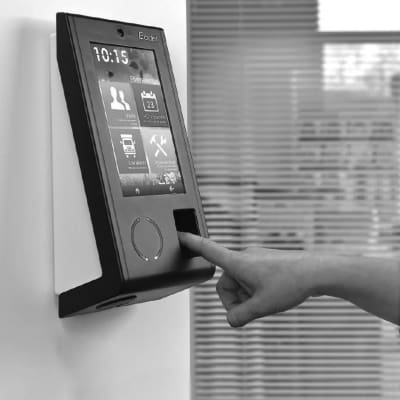
In today’s fast-paced business environment, efficient time and attendance management is crucial for maintaining productivity and ensuring accurate payroll processing. At Auto Time Systems, we offer a range of innovative clocking on systems designed to meet the diverse needs of modern workplaces. Our solutions include proximity and key fob clocking, fingerprint clocking, Suprema facial recognition devices, and Kelio mobile and PC clocking options, providing flexibility and convenience for businesses of all sizes.
Proximity and Key Fob Clocking
Our proximity and key fob clocking on systems are reliable and easy to use, making them a popular choice for many businesses. These systems allow employees to clock in and out by simply waving a proximity card or key fob near the terminal. This contactless method is not only hygienic but also reduces wear and tear on the devices. Proximity clocking technology uses durable RFID badges or key fobs, ensuring accurate time tracking and reducing the risk of time theft.

Fingerprint Clocking In Systems
For businesses seeking a more secure and reliable solution, our fingerprint clocking in systems offer unparalleled performance and accuracy. These systems allow employees to clock in and out by scanning their fingerprints, which are then compared to stored biometric templates for verification. This method eliminates the possibility of buddy punching, ensuring that only authorised personnel can clock in and out, thereby enhancing the integrity of your time and attendance records.
Our fingerprint clocking systems are designed to handle a wide range of fingerprints, accommodating various skin types and conditions. Whether your employees have dry, wet, or worn fingerprints, our advanced sensors and algorithms ensure accurate and consistent recognition. This adaptability makes our systems suitable for diverse working environments, from office settings to industrial sites.
In addition to their robust security features, our fingerprint clocking systems are user-friendly and efficient. Employees can quickly and easily clock in and out with a simple touch, reducing queues and minimising time spent on clocking procedures. The intuitive interfaces and clear instructions make the process straightforward, requiring minimal training for new users.
Furthermore, our fingerprint clocking systems integrate seamlessly with your existing workforce management software, providing real-time data on employee attendance and working hours. This integration allows for efficient monitoring and reporting, helping you to streamline payroll processing and ensure compliance with labour regulations.
By choosing our fingerprint clocking in systems, you can enhance security, improve accuracy, and boost overall efficiency in your time and attendance management. Experience the benefits of cutting-edge biometric technology and take your workforce management to the next level.
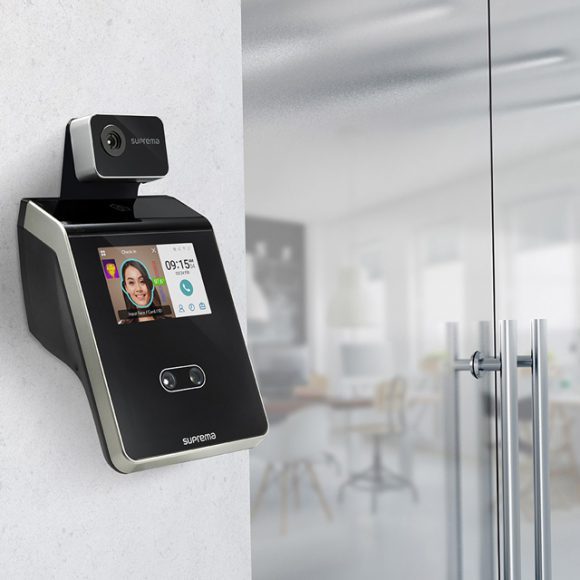
Facial Recognition Clocking (Suprema)
For the most advanced and secure solution, Suprema facial recognition devices offer exceptional accuracy and convenience. Suprema’s facial authentication technology provides fast, easy, and
intuitive user authentication by recognising individuals’ faces. This technology is highly accurate, even in varying lighting conditions, and includes live face detection to prevent spoofing attempts using photographs or 3D printed masks. Suprema’s FaceStation F2, for example, combines IR and visual facial authentication with a deep learning algorithm to achieve top performance and anti-spoofing capabilities.
Mobile, PC, and Virtual Clocking Systems
In addition to traditional and advanced biometric terminals, we also offer Kelio mobile and PC clocking in systems, providing ultimate flexibility for your workforce. The Kelio virtual clocking terminal allows employees to clock in and out using their PC, smartphone, or tablet, making it ideal for remote workers or those frequently on the move. With the Kelio virtual clocking terminal, employees can log their arrival and departure times, track their working hours, and manage their activities and cost centres with just a few clicks. This solution is highly intuitive and user-friendly, requiring no training for employees to start using it.
Benefits of Our Clocking On Systems
By integrating our clocking solutions into your workforce management system, you can enjoy several benefits:
- Improved Accuracy: Eliminate manual errors and ensure precise time tracking with biometric and virtual clocking options.
- Enhanced Security: Protect your business with advanced facial recognition technology that prevents unauthorised access and time theft.
- Flexibility: Accommodate different working styles and environments with mobile and PC clocking options.
- Convenience: Simplify time and attendance management with user-friendly interfaces and seamless integration with your existing systems.
At Auto Time Systems, we are committed to providing cutting-edge solutions that enhance your workforce management and streamline your operations. Whether you prefer proximity and key fob clocking, fingerprint clocking, advanced facial recognition devices, or flexible virtual clocking options, we have the right solution for your business. Contact us today to learn more about our products and how they can benefit your organisation.
Get in touch below to request a demonstration of our solutions.
Timesheet Software to Manage Employee Time Keeping

Timesheet Software to Manage Employee Time Keeping
In today’s dynamic work environment, effective time management is crucial for maintaining productivity and ensuring compliance with Working Time Rules. Our Timesheet software is designed to streamline the process of managing employee timekeeping, providing accurate and reliable data for payroll and workforce management. In this blog post, we will explore the key features of our system, focusing on rules for recording start and finish times, thresholds for early arrivals and late finishes, tolerances for lateness, break rules and management, overtime and premiums, the Working Time Directive, and automatic alerts and reporting.
Recording Start and Finish Times
Accurate recording of start and finish times is essential for ensuring employees are paid correctly and for maintaining compliance with Working Time Rules. Our system uses advanced timekeeping technology, such as biometric scanners and RFID cards, to capture precise clock-in and clock-out times. This eliminates the risk of manual errors and ensures that all time entries are accurate and verifiable.
Thresholds for Early Arrivals and Late Finishes
To accommodate varying work schedules, our system allows for the configuration of thresholds for early arrivals and late finishes. This means that employees who arrive slightly early or leave slightly late can be recorded without affecting their official working hours. These thresholds can be customised to suit the specific needs of your business, ensuring flexibility while maintaining accurate timekeeping, and reduced administration/calculation time.
Tolerances for Lateness
Managing lateness is a critical aspect of timekeeping. Our system includes configurable tolerances for lateness, allowing you to define acceptable limits for late arrivals. Employees who clock in within the tolerance period can be marked as on time (or with a minor late notification), while those who exceed the tolerance will be flagged for review. This helps in maintaining punctuality and addressing habitual lateness effectively.
Break Rules and Management
Breaks are an important part of the working day, and our system ensures that break times are accurately recorded and managed. You can set rules for the duration and frequency of breaks, ensuring compliance with legal requirements and company policies. The system can automatically deduct break times from total working hours, providing an accurate reflection of actual work time.
Overtime and Premiums
Our Timesheet software simplifies the calculation of overtime and premiums. You can define rules for overtime eligibility, including thresholds for daily and weekly hours. The system automatically calculates overtime pay based on these rules, ensuring that employees are compensated fairly for their extra work. Additionally, premiums for night shifts, weekends, and holidays can be configured to reflect your company’s pay policies.
Working Time Directive
Compliance with the Working Time Directive is essential for protecting employee rights and avoiding legal issues. Our system helps you stay compliant by monitoring working hours, rest periods, and maximum weekly hours. Automatic alerts can be set up to notify managers when employees are approaching or exceeding legal limits, ensuring timely intervention and compliance.
Automatic Alerts and Reporting
To keep you informed and in control, our timesheet Software includes automatic alerts and comprehensive reporting features. Managers can receive real-time notifications for various events, such as late arrivals, missed clock-ins, and overtime thresholds. Detailed reports provide insights into employee attendance, working hours, and compliance with company policies and legal requirements. These reports can be customised and exported for further analysis, helping you make informed decisions and improve workforce management.
Effective timekeeping is essential for maintaining productivity, ensuring accurate payroll, and complying with working time regulations. Our Timesheet Software offers a comprehensive solution for managing employee timekeeping, with features designed to address the specific needs of your business. From recording start and finish times to managing breaks, overtime, and compliance with the Working Time Directive, our system provides the tools you need to streamline your timekeeping processes and enhance workforce management.
If you have any questions or would like to learn more about our Timesheet Software, please feel free to contact us. We’re here to help you achieve accurate and efficient timekeeping for your business.
11 Benefits of Implementing a Time and Attendance System

Key Benefits of Implementing a Time and Attendance System
In today’s fast-paced business environment, managing time and attendance effectively is crucial for any organisation. Implementing a robust time and attendance system can bring a multitude of benefits that go beyond just tracking hours. Here are 11 tangible benefits that can transform your workplace:
1. Enhanced Accuracy
Manual time tracking is prone to errors, which can lead to payroll discrepancies. A good time and attendance system ensures precise tracking of employee hours, reducing the risk of costly mistakes. For example, an automated system will accurately log the exact time an employee clocks in and out, eliminating the possibility of human error. This precision is particularly important in industries where employees work varying shifts and overtime, ensuring that every minute worked is accounted for correctly.
2. Increased Productivity
Automating time and attendance processes frees up valuable time for HR and management. This allows them to focus on more strategic tasks, ultimately boosting overall productivity. For instance, instead of spending hours manually calculating payroll, HR can use that time to develop employee engagement programmes or improve recruitment processes. Additionally, managers can quickly access attendance reports to identify and address any issues, such as frequent lateness or absence, without sifting through piles of paperwork.
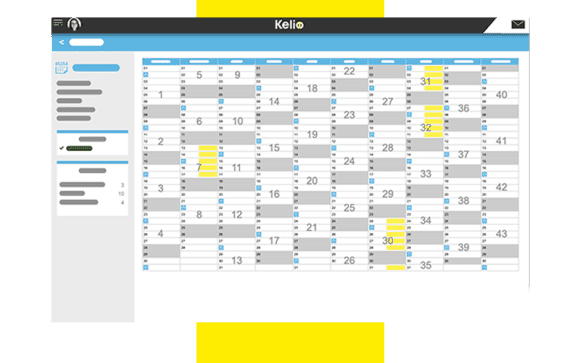
3. Cost Savings
By eliminating time theft and reducing administrative overhead, a quality system can lead to significant cost savings. Accurate time tracking ensures that employees are paid correctly for the hours they work, preventing overpayments. For example, a company that previously relied on manual time sheets might find that automating the process saves thousands of pounds annually. Furthermore, reducing the time spent on administrative tasks means that HR staff can focus on more value-added activities, contributing to the overall efficiency and profitability of the organisation.
4. Improved Compliance
Staying compliant with labour laws and regulations is essential. A reliable time and attendance system helps ensure that your organisation adheres to legal requirements, avoiding potential fines and legal issues. For example, the system can automatically calculate overtime according to local laws, ensuring compliance without manual intervention, or ensure Working Time Directive adherence. This is particularly important in industries with strict labour regulations, such as healthcare and manufacturing, where non-compliance can result in hefty fines and damage to the company’s reputation.
5. Better Workforce Management
With real-time data on employee attendance, managers can make informed decisions about scheduling, overtime, and workforce allocation. This leads to more efficient use of resources and better overall management. For instance, if a manager notices a pattern of absenteeism in a particular department, they can investigate and address the issue promptly. Additionally, real-time data allows for more flexible scheduling, ensuring that the right number of employees are available during peak times, which can improve customer service and operational efficiency.

6. Enhanced Employee Accountability
A transparent system promotes accountability among employees. When everyone knows their hours are being accurately tracked, it encourages punctuality and reduces instances of lateness and absenteeism. For example, a retail store might see a decrease in late arrivals once employees know their clock-in times are being monitored. This accountability can also extend to managers, who can use the data to ensure fair and consistent enforcement of attendance policies, fostering a culture of trust and responsibility.
7. Streamlined Payroll Processing
Integrating time and attendance data with payroll systems simplifies the payroll process. This reduces the time and effort required to process payroll, minimising errors and ensuring timely payments. For example, a manufacturing company can seamlessly transfer attendance data to their payroll software, reducing the payroll processing time from days to hours. This integration also helps in maintaining accurate records for audits and financial reporting, ensuring that the organisation’s financial data is always up-to-date and reliable.
8. Improved Employee Satisfaction
Employees appreciate accurate and timely pay. A good system ensures that they are compensated correctly for their work, leading to higher job satisfaction and morale. For instance, an employee who consistently works overtime will feel valued when their extra hours are accurately recorded and compensated. Additionally, having a transparent system in place can reduce disputes over pay and attendance, leading to a more harmonious workplace where employees feel their contributions are recognised and rewarded.
9. Data-Driven Insights
Access to detailed attendance data allows organisations to identify patterns and trends. This information can be used to improve scheduling, identify potential issues, and make data-driven decisions. For example, a company might notice that productivity dips on certain days and adjust staffing levels accordingly. These insights can also help in identifying high-performing employees who consistently demonstrate good attendance, providing opportunities for recognition and career development.

10. Scalability
As your organisation grows, a robust time and attendance system can scale with you. It can handle an increasing number of employees and adapt to changing business needs without compromising on accuracy or efficiency. For instance, a small business that expands into multiple locations can easily integrate new employees into the existing system. This scalability ensures that the organisation can continue to operate smoothly and efficiently, regardless of its size or complexity.
11. Enhanced Security
Modern time and attendance systems often include biometric verification and secure data storage. This enhances security by preventing unauthorised access and ensuring that sensitive employee information is protected. For example, a healthcare facility might use fingerprint scanning to ensure that only authorised personnel can access certain areas. This level of security not only protects the organisation from potential breaches but also ensures that employees’ personal information is kept confidential and secure.
Conclusion
Implementing a quality time and attendance system is more than just a technological upgrade; it’s a strategic move that can lead to numerous tangible benefits. From cost savings and improved compliance to enhanced employee satisfaction and data-driven insights, the advantages are clear. Investing in a robust system can transform your workplace, making it more efficient, productive, and secure.
What is Meant by Flexible Working?

Flexible working has become a buzzword in modern employment, reflecting a shift towards more adaptable work arrangements. But what exactly does it entail, and why is it gaining traction? This blog post delves into the concept of agile, remote and hybrid working, its current trends, and what the future holds.
Understanding Flexible Working
Flexible working refers to any work arrangement that allows employees to have greater control over their working hours, location, or both. This can include options such as working from home, flexitime, compressed hours, job sharing, and part-time work
Types of Flexible Working
Flexible working encompasses a variety of arrangements that allow employees to tailor their work schedules to better fit their personal and professional lives. Here are some of the most common types:
Remote Working
Remote working, also known as telecommuting, allows employees to work from a location other than the office, often from home. This arrangement became particularly popular during the COVID-19 pandemic, as it enabled businesses to continue operations while adhering to social distancing guidelines. Remote working offers numerous benefits, including reduced commuting time, increased flexibility, and the ability to create a personalised work environment. However, it also presents challenges such as potential isolation and the need for robust digital communication tools.
Flexitime
Flexitime allows employees to choose their start and finish times within agreed limits. This arrangement typically includes core hours during which all employees must be present, while the remaining hours can be adjusted to fit personal needs. For example, an employee might choose to start work at 7 am and finish at 3 pm, while another might prefer a 10 am to 6 pm schedule. Flexitime promotes a positive work-life balance and can lead to increased job satisfaction and productivity.
Compressed Hours
Compressed hours enable employees to work their total agreed hours over fewer days. For instance, a full-time employee might work four 10-hour days instead of five 8-hour days, resulting in a three-day weekend. This arrangement can improve work-life balance by providing longer periods of uninterrupted personal time. However, it may also lead to longer, more intense workdays, which can be challenging for some employees.
Job Sharing
Job sharing involves two or more employees sharing the responsibilities of a full-time position. This arrangement allows employees to work part-time while ensuring that the full-time role is covered. Job sharing can be particularly beneficial for employees seeking to balance work with other commitments, such as childcare or education. It also allows employers to retain talented employees who might otherwise leave due to the inability to work full-time.
Part-Time Work
Part-time work involves employees working fewer hours than a full-time schedule. This arrangement can vary widely, from a few hours a week to just under the full-time threshold. Part-time work offers flexibility for employees who need to balance work with other responsibilities or who prefer a reduced workload. Employers benefit from the ability to attract a diverse workforce and manage labour costs more effectively.
Benefits of Flexible Working
Flexible working offers numerous benefits for both employees and employers. Let’s delve into these advantages in more detail.
For Employees
- Improved Work-Life Balance: Flexible working allows employees to better manage their professional and personal responsibilities. This balance is crucial for overall well-being and can lead to higher job satisfaction.
- Reduced Commuting Time: By working remotely or choosing flexible hours, employees can significantly cut down on commuting time. This not only saves time but also reduces stress and travel expenses.
- Increased Job Satisfaction: Having control over one’s work schedule can lead to greater job satisfaction. Employees feel more valued and trusted, which can enhance their commitment to the organisation.
For Employers
- Higher Employee Retention: Offering flexible working options can help retain top talent. Employees are more likely to stay with an organisation that supports their need for flexibility .
- Reduced Absenteeism: Flexible working can lead to lower absenteeism rates. Employees can manage their schedules to accommodate personal appointments without needing to take time off.
- More Motivated Workforce: A flexible work environment can boost employee morale and motivation. When employees feel their needs are met, they are more engaged and productive
Flexible working is not just a trend; it is a strategic approach that benefits both employees and employers, fostering a more productive and satisfied workforce.

Trends in Flexible Working
The COVID-19 pandemic significantly accelerated the adoption of flexible working practices. Remote working, in particular, saw a dramatic increase, with many organisations realising the potential for maintaining productivity outside the traditional office environment.
The Rise of Remote Working
Before the pandemic, remote working was relatively uncommon, with only a small percentage of employees working from home regularly. However, the onset of COVID-19 forced a rapid shift to remote work as lockdowns and social distancing measures made traditional office work impractical. According to the UK Labour Force Survey, the percentage of people working from home all the time rose from around 5% in early 2020 to 10% by the end of the year. This shift demonstrated that many roles could be performed effectively outside the office, leading to a broader acceptance of remote working.
Uneven Uptake of Other Flexible Working Arrangements
While remote working saw a significant boost, alternative work arrangements, such as job sharing and compressed hours, did not experience the same level of uptake. Data from the CIPD indicates that there was actually a drop in these types of flexible working arrangements during the pandemic. This could be attributed to several factors:
- Nature of the Work: Not all jobs are suitable for job sharing or compressed hours. These arrangements often require a high degree of coordination and may not be feasible for roles that demand continuous presence or specific hours of operation.
- Employer Readiness: Many employers were unprepared to implement these forms of flexible working quickly. The immediate need was to enable remote working, which took precedence over other flexible arrangements.
- Employee Preferences: Employees may have preferred the simplicity and convenience of remote working over other flexible options. The ability to work from home offered immediate benefits such as reduced commuting time and better work-life balance.
Future Trends in Flexible Working
Looking ahead, several trends are likely to shape the future of flexible working:
- Hybrid Working Models: Many organisations are adopting hybrid models, combining remote work with office-based work. This approach offers flexibility while maintaining some level of in-person collaboration.
- Increased Flexibility in Job Roles: As employers become more accustomed to alternative work arrangements, there may be a gradual increase in the adoption of job sharing, compressed hours, and other flexible arrangements. This will require a cultural shift and more robust support systems.
- Legislative Support: The UK Government has introduced reforms to make flexible working a default option where possible. Employees now have the right to request flexible working from day one of employment. This legislative support is likely to encourage more widespread adoption of various flexible working practices.
Conclusion
Flexible working is more than just a trend; it represents a fundamental shift in how we approach work. By embracing agile working practices, organisations can create a more inclusive, productive, and satisfied workforce. As we move forward, it will be essential for both employers and employees to adapt to these changes and harness the benefits of a more flexible working world.
Flexible working, whichever form it takes, requires solutions to manage remote, hybrid, or flexible working employees.
Get in Touch if you’d like to learn more and how we can help you implement and manage Flexible Working in your business
7 Game-Changing Time and Attendance Features To Look Out For

In today’s fast-paced business landscape, your time and attendance system should be doing far more than simply tracking hours, and giving you a fixed report —it should be a game-changer for your entire operation. Imagine a tool that not only keeps you compliant but also streamlines processes and boosts productivity. Intrigued? Keep reading to uncover seven powerful Time and Attendance features that will take your system from ordinary to extraordinary and make managing your workforce a breeze.
Feature 1: Cloud-Based, Access Your System Anytime, Anywhere.
Opting for a cloud-based Time and Attendance System is a smart choice for any modern business. These systems offer unparalleled flexibility, allowing you to access and manage workforce data from anywhere, at any time. Effortlessly track clock-ins, monitor hours, and handle scheduling, even if your team is spread across different locations. Additionally, cloud storage ensures robust data security with automatic backups and protection against hardware failures, significantly reducing the risk of data loss. By embracing this technology, you not only enhance operational efficiency but also ensure business continuity and peace of mind.
Feature 2: All-in-One HR Integration
An all-in-one time and attendance system brings everything together, eliminating the need for separate platforms. With integrated HR features, the system ensures smooth synchronisation of time tracking, payroll, employee records, HR document and record management, and leave management. This helps keep all your data up-to-date and aligned across departments. Integration simplifies processes by reducing the chances of errors and saving time. By offering a unified approach, the all-in-one system helps streamline your HR and workforce management, cutting down on administrative tasks and making day-to-day operations run more smoothly.
Feature 3. Employee Self-Service Capabilities
Giving employees the ability to manage their own time and attendance can transform both their experience and your HR operations. With self-service portals, employees can quickly request time off, review their attendance history, and monitor their schedules—all without needing HR intervention. This reduces the workload on HR teams, enabling them to focus on more strategic responsibilities. Additionally, it fosters greater transparency and enhances employee satisfaction, as staff have direct access to their own data and can manage their time with ease.
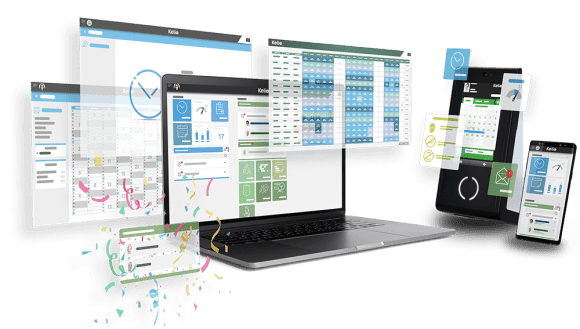
Feature 4: Automated Alerts to Stay on Top of Attendance in Real-Time
Tracking employee attendance no longer requires constant manual oversight. With automated alerts, your time and attendance system can instantly notify you of key events such as late arrivals, early departures, absences, or missed clock-ins. These real-time notifications ensure you’re always aware of attendance issues as they arise, allowing you to address them promptly before they escalate. Whether through email, SMS, or app notifications, automated alerts help you stay in control and ensure operations run smoothly.
Feature 5: Integrated Visitor Management
An advanced workforce management system does more than just track employee time—it also integrates visitor management. One of the unexpected Time and Attendance features which enables you to efficiently manage visitors on your premises. By providing a clear, up-to-date view of who is on-site, this integration enhances security and helps ensure compliance with health and safety regulations. By combining workforce and visitor management in a single system, you can reduce administrative tasks and simplify your operations, including accurate roll calls in the event of emergencies.
Feature 6: Advanced Reporting to Transform Data into Actionable Insights
Advanced, customisable reporting capabilities turn your time and attendance system into a powerful tool for decision-making. By generating detailed reports on employee attendance, overtime, labour costs, and other key metrics, you gain valuable insights that help you optimise staffing, manage payroll, and identify trends. Reporting enables you to make informed, data-driven decisions, turning your system from a simple tracking tool into a strategic resource.
Feature 7: Advanced Staff Scheduling and Rostering
An advanced scheduling system takes the complexity out of shift planning, ensuring that the right employees are scheduled at the right time. With features like automated shift assignments, real-time adjustments, and employee availability tracking, managers can create optimal schedules with ease. This system helps minimise scheduling conflicts, reduces the risk of overstaffing or understaffing, and ensures compliance with labour laws. By integrating forecasting tools and detailed reporting, advanced scheduling also enables businesses to predict staffing needs, control labour costs, and improve overall operational efficiency.
These game-changing Time and Attendance features transform your time and attendance system into a powerful asset. From cloud-based access to integrated visitor management, each feature offers unique benefits that streamline operations, improve accuracy, and enhance productivity. Ready to take your business to the next level? It’s time to upgrade your time and attendance system and unlock the full potential of these innovative solutions.
Please get in touch if you would like a introductory chat about the solutions we offer
Time and Attendance: Discover Our Latest Kelio Solutions
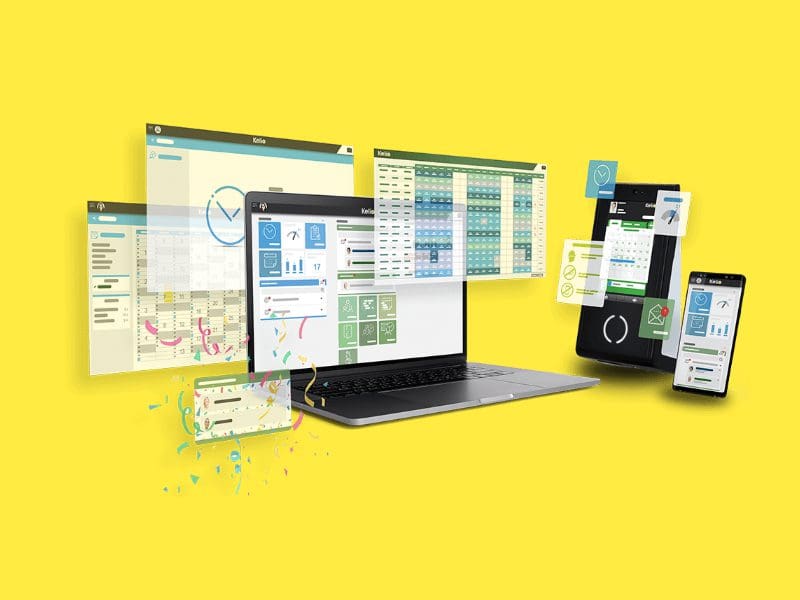
Discover Our Latest Kelio Solutions
At Auto Time Systems, we know the importance of maintaining time and attendance systems for ensuring accurate payroll, legal compliance, improved productivity, efficient resource management, enhanced security, and data-driven decision-making, all while promoting fairness and transparency in the workplace. However, we’ve identified that some of the Kelio Time and Attendance hardware is now obsolete, therefore we are actively encouraging our customers to contact us about upgrading.

Why Upgrade Your Kelio Devices?
- Enhanced Performance & Security – Experience faster processing speeds, improved security, and enhanced features with the latest hardware.
- System Support – Obsolete devices may no longer be eligible for repairs or software updates, increasing the risk of extended system downtime.
- Smooth Integration with New Software – New hardware ensures compatibility with upcoming software releases, making your system secure and future-ready.
We have a range of advanced Kelio devices designed to meet your needs, ensuring your time management and access control systems are efficient and reliable.
Contact us today to learn more about your upgrade options, or to book a consultation. We’re here to help you ensure your system remains secure, reliable, and efficient.
Time and Attendance: Discover Our Latest Sirrom Solutions
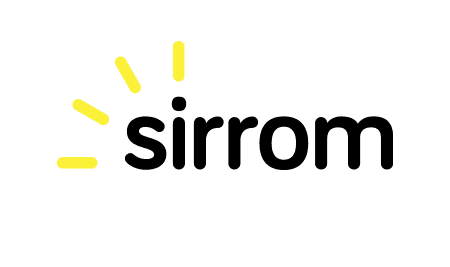
At Auto Time Systems, we know the importance of maintaining time and attendance systems for ensuring accurate payroll, legal compliance, improved productivity, efficient resource management, enhanced security, and data-driven decision-making, all while promoting fairness and transparency in the workplace.
Therefore, as part of our continued commitment to our customers, we recently reached out to our Sirrom customers to discuss their system upgrade options.
So, Why Upgrade Your Sirrom Devices?
- Improved Performance & Security – Upgrade to enjoy faster processing, enhanced accuracy, and robust security features.
- Ongoing Support & Maintenance – Fully supported with ongoing updates and service, avoiding any potential downtime.
- Future-Proofing – New hardware is designed to seamlessly integrate with future software versions, ensuring continued compatibility.
We have a wide range of modern Sirrom devices available, tailored to your specific business needs. Our team can guide you through the upgrade process to ensure a smooth and efficient transition.
Special Offer for Sirrom Customers:
Trade in your obsolete Sirrom devices today and enjoy special discounts on selected new models. This is a fantastic opportunity to future-proof your system and save on costs!
Contact us today to learn more about your upgrade options, or to book a consultation. We’re here to help you ensure your system remains secure, reliable, and efficient.

Lockdown Test Pending…?

It goes without saying that schools have a duty to both pupils and staff to provide the best security possible. Part of this duty is to have an effective lockdown system in place. Because emergency events are random, schools can do little to prevent them – but they can control how they respond.

At Auto Time Systems, we understand the importance of school safety. The Bodet Lockdown System provides a clear and synchronized alert system, essential for quick and effective response based on your safety protocols. Regular training and testing are fundamental to maintain readiness.
According to the National Counter Terrorism Security Office (NaCTSO), preparation is essential. They recommend that schools:
- Clearly define roles and responsibilities during an emergency.
- Regularly test staff understanding.
- Continuously refresh and reinforce emergency plans.
Keep your school community safe with the Bodet lockdown system. It’s vital to train your team thoroughly and conduct regular drills and tests. This way, everyone from staff to students becomes well-versed in the alert process and knows the necessary actions during critical times.
Has your school conducted the monthly lockdown test? It’s crucial for safety!

Contact us to learn more about how the Bodet Lockdown System can enhance safety at your school to help protect you in any emergency.

